Differences between Independent Arrival Time Picks
Poster presentation S12C-06 at AGU Fall 1999 Meeting
Abstract
Contents
Summary
- I consider differences between arrivals times where the IDC and the station operator made the same phase identification, and the ISC associated both picks with the same earthquake.
- Means are computed from differences smaller than ±2 seconds, to exclude outliers resulting from misidentification.
- "Uncertainty" of each mean is the standard deviation divided by the square root of the number of differences.
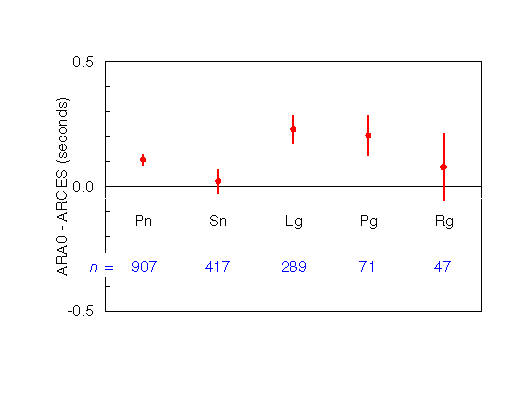
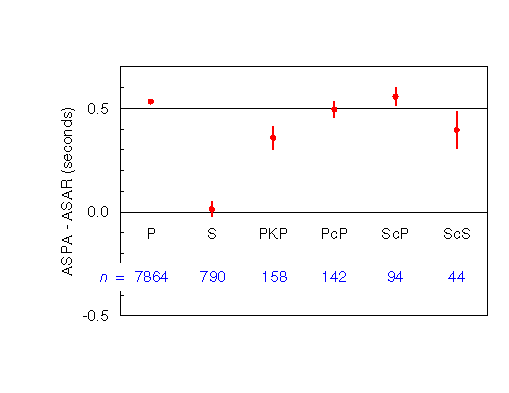
Top of Page
Among Regional Phase Picks
- The IDC pick is early, on average, at each of Arcess, Noress, Finess and Geress.
- Initial phase pick (Pn, Pg) differences have a clear mode, with rather skewed distribution.
- Differences between picks of later phases (e.g., Lg) show, at best, a much weaker mode.
- At some stations, Sn time pick differences within ±2 seconds are almost uniformly distributed.
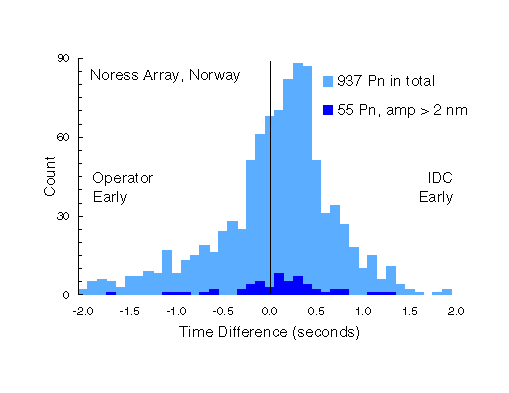

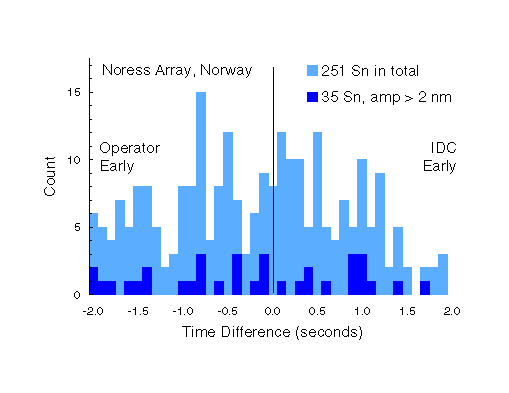
Top of Page
Among Teleseismic Phase Picks
- The IDC pick is early, on average, at each of Geress, Matsushiro and Alice Springs.
- Initial phase pick (P, PKP) differences have a clear mode, with an approximately Gaussian distribution.
- Differences between picks of later P-type phases (PcP, ScP) probably have an equally strong mode, with a similar mean.
- S time pick differences also have a strong mode but are significantly more widely distributed.
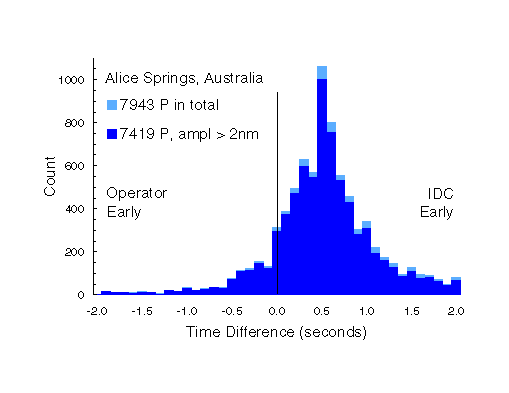
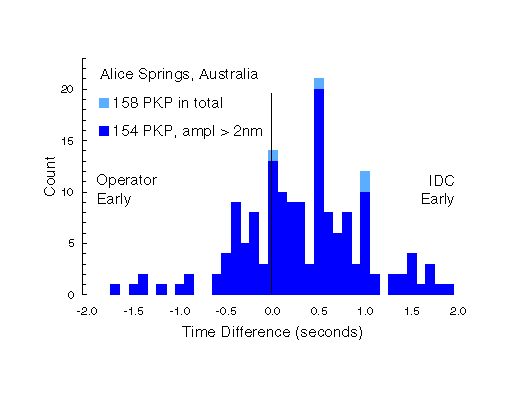

Top of Page
There are large differences with azimuth
- Density distribution functions can be used to demonstrate clear differences between sectors, where they are known.
- Cumulative distribution functions can be used more easily to compare several sectors, to discover azimuthal patterns.
- The mean difference does not vary too much with azimuth.
- The width of the distribution of Pn differences varies systematically with azimuth at several stations.
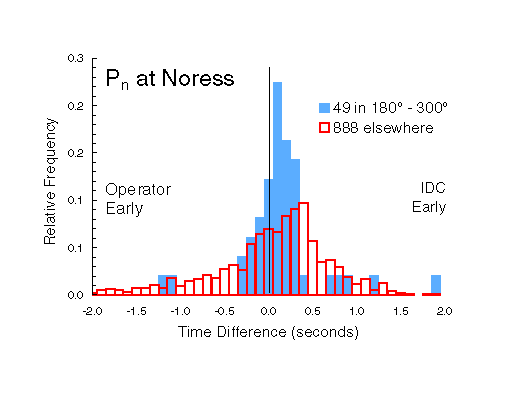
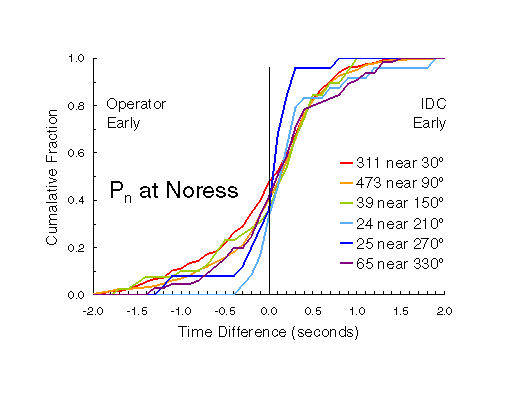
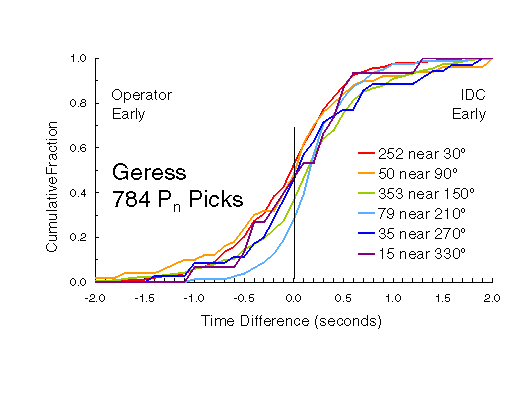
Top of Page

